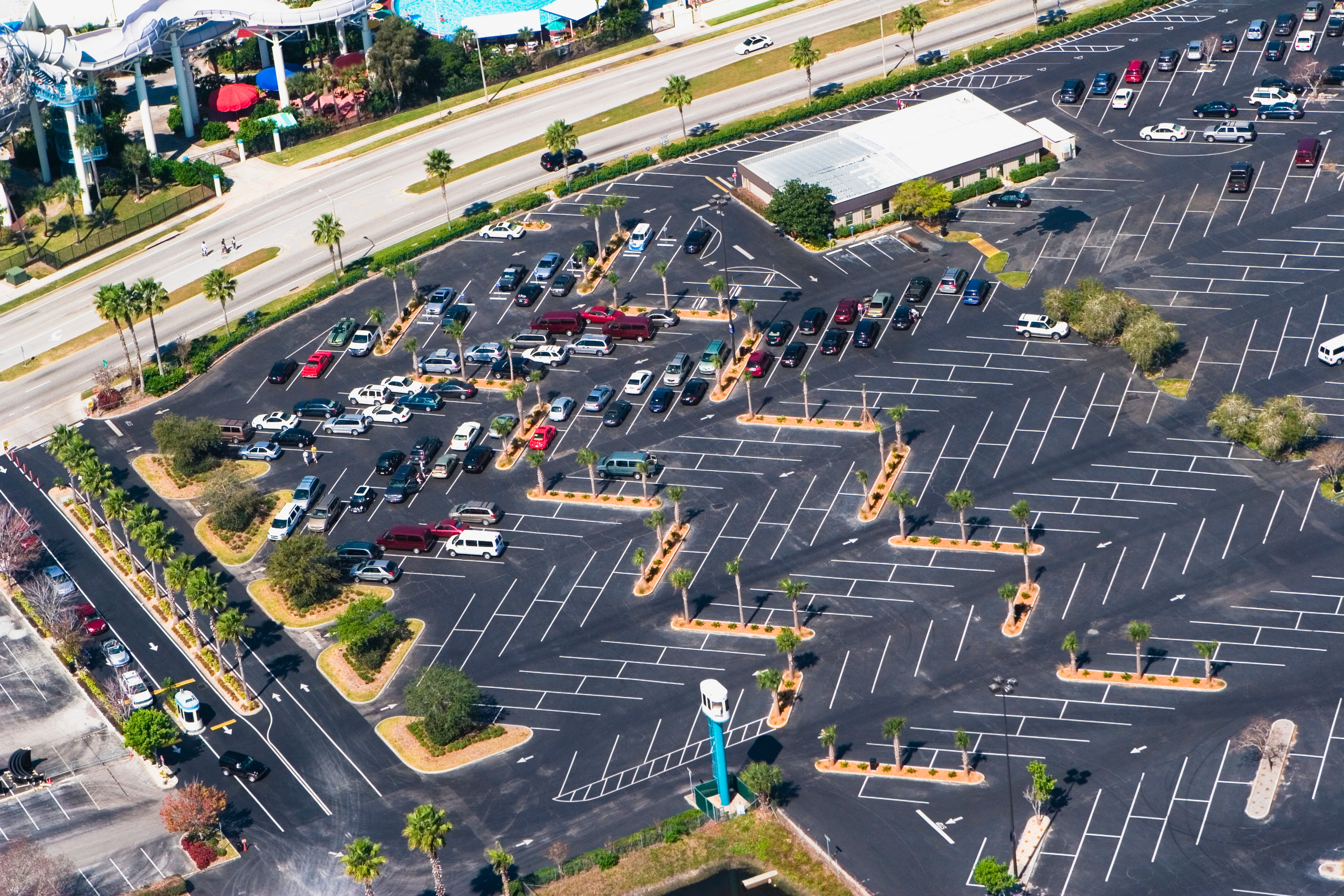Parking Lots Cause More Heat and Flooding–Here’s How 100 U.S. Cities Rank


CLIMATEWIRE | Sunbelt cities prone to extreme heat and precipitation have more parking lots in their central cores than other urban areas, potentially worsening climate impacts for millions of people, according to a nonprofit group focused on urban planning
The new analysis by the Parking Reform Network sheds light on how surface lots and decks in 100 American cities affect their ability to control stormwater and limit summer heat absorption that can turn downtowns into ovens.
“There are different ways look to look at impervious surface in urban areas. We focused on parking because lot of the growth in American cities has been designed to accommodate vehicles,” said Thomas Carpenito, who developed the index and is a project manager with the New York City Department of Buildings. “As a result, our cities became covered in parking spaces and surface lots. With all this land going for parking, there wasn’t much left for anything else.”
Founded in 2019, the membership-based Parking Reform Network includes roughly 550 planners, consultants, academics, environmentalists and others, Tony Jordan, the network’s president, said in an email. Its primary focus “is educating the public about the impacts of car parking policy — primarily the twin problems of requiring too much [parking] and managing what exists poorly,” he said.
While surface parking has accompanied the growth of most U.S. cities, those with the highest current concentrations of vehicle lots and decks are in the Southwest, along the Gulf Coast and in the Southeast, such as Atlanta, Dallas and Houston. Smaller cities that have large percentages of their core area dedicated to parking include Columbia, South Carolina; Melbourne, Florida; and Baton Rouge, Louisiana.
One-third of Baton Rouge, the state capital, is dedicated to parking, according to the analysis, while nearly half of central San Bernardino, California, is covered by lots or decks. Among large cities, Detroit, Las Vegas and Orlando, Florida, had more than 30 percent of their central surface area dedicated to parking.
Many environmentalists have long opposed building parking lots at the center of cities, a trend that exploded with U.S. suburbanization in the 1960s. Impervious parking lots can worsen urban sheet flooding during extreme rain events. Peak runoff from parking lots can overwhelm stormwater systems, leading to flooded streets and basements, sewage backups and pollution spills.
Dark asphalt lots also absorb solar radiation, contributing to urban heat island effect in many city centers.
During last year’s record-breaking heat wave in the Southwest, Phoenix saw 31 consecutive days of 110-degree heat or higher. Its average July temperature was 102.8 degrees, the highest ever recorded in a U.S city. Phoenix scored 7th from the bottom among large cities, with 22 percent of its urban core covered in parking lots or decks.
Cities with higher index scores generally had the highest concentration of parking lots. Las Vegas, for example, had a score of 91 out of 100, with nearly one-third of its city center being dedicated to parking. San Antonio and Tampa, Florida, had similar scores.
Two cities — Detroit and San Juan, Puerto Rico — had high index scores for unique reasons. In Detroit, decades of urban blight have reduced large areas of the city’s core to surface lots. San Juan’s score was associated with the city shifting away from its original downtown into newly developed areas.
In large cities, the median percentage of land dedicated to parking lots in central cities was 26 percent, according to the analysis. While excluded from the study, streets and sidewalks were estimated to account for 25 percent of the surface in all cities, which adds to the total impervious surface area, Carpenito said.
The best-performing city on the index was New York City, where surface parking lots account for less than 1 percent of the city’s five boroughs. Other major cities that had less than 10 percent of their central area dedicated to parking lots were San Francisco, Washington, Boston, Chicago and Seattle. Los Angeles dedicates 23 percent of its downtown for parking.
Carpenito said the nation’s largest cities also tend to have the highest land values, generally making parking lots uneconomical. Other high-performing cities on the index, like Portland, Oregon, have adopted strong ordinances to limit parking in their city centers.
“It’s about reducing car dependency and removing barriers to building walkable and sustainable communities,” Jordan said.
Reprinted from E&E News with permission from POLITICO, LLC. Copyright 2023. E&E News provides essential news for energy and environment professionals.





